5 Steps to Empower Clients to Be More Physically Active
 by Natalie Digate Muth
by Natalie Digate Muth
on December 5, 2023
Helping your health coaching clients adopt and then adhere to a physical-activity program can be challenging, as every person’s reason for wanting to change their lifestyle is unique. Here, we explore five simple steps that health coaches can take to empower clients to become more physically active.
1. Identify your client’s readiness to change.
There are five stages that people typically go through when adding physical activity to their routines:
Precontemplation: Physically inactive and not considering change
Contemplation: Inactive but thinking about becoming more physically active
Preparation: Doing some physical activity, but not consistently
Action: Engaging in regular physical activity, but for less than six months
Maintenance: Regularly active for longer than six months
Using the “readiness to change ruler” (below) can help you get a sense of your client’s current stage of change when it comes to physical activity. Here’s how:
Ask the client to self-report on a scale of 0 to 10, with 0 being “not considering change” and 10 being “already changing.” A 0 to 2 response tells you the client is in the early stages of change. The 3 to 7 zone tells you the client is thinking about and maybe even preparing for change. Most clients in the 8 to 10 zone are in the process of changing.
Readiness to Change Ruler

2. Tailor your approach to your client’s readiness to change.
Once you learn where your client falls on that continuum, you can align your fitness-related interventions with the client’s current stage. Here are some stage-specific strategies to consider:
Precontemplation: Ask some open-ended questions to help increase their awareness about the need for change. For example:
How will you know when it is time to think about becoming more active?
What signals will tell you to start thinking about becoming more active?
Contemplation: Use techniques such as motivational interviewing to help a client work through their ambivalence about change and come to the point where they feel ready. For example, try asking open-ended questions to help explore the pros and cons of making a change. For example:
Why do you want to make this change?
How might you go about making this change?
What are the three best reasons for you to do it?
How important is it for you to make this change?
Then, reflect back and summarize what you heard the client say before asking:
What do you think you’ll do?
Preparation: Help clients envision what life might look like once they have become more physically active. Use this process to help them develop goals, as well as an action plan to achieve them. It is also a great time to explore potential barriers and identify how your client can overcome them. For example, you might suggest:
Identify one or two barriers to becoming more active right away. Together, let’s list some strategies that could help you overcome them.
Pick a physical-activity goal that is most important to you. Let’s work together to figure out how you can do it by ____________ (fill in a date).
Action: Spend time working with the client to develop a meaningful physical-activity program. The goal is to help a client adopt that behavior for six months or more. Here are a few questions you can ask to support client adherence:
What has worked in the past for you? What helped it work? What could help it work even better?
How can we best keep track of the steps you are making to achieve your goal?
Maintenance: Help the client establish routines and accountability to help the positive habits persist despite barriers and obstacles that are bound to show up along the way. Some questions you might ask include:
What’s helping you keep to your routine?
What are your high-risk temptations?
What else could help you?
3. Connect the client’s goals to their values.
While a client may come to you with specific weight-loss or fitness goals, helping them connect their goals to their values, see the big picture, and envision what life will be like once the goal is achieved can serve as a powerful source of motivation. One way to do this is through techniques such as creating a vision board. A common way to use vision boards is to get a poster board and use drawings, collages and collections of words or symbols to represent a vision of the client’s desired future. Other ways include writing a personal mission statement or visualizing what life might look like in five or 10 years if the client makes this change.
4. Implement OARS.
An excellent way to improve communication skills and better engage with clients is through the use of the OARS skills, which stands for:
Open-ended questions. Ask questions that cannot be answered with a “yes” or “no.” Good starts to open-ended questions include: “What…”, “How…,” and “Why…”
Affirmations. Acknowledge a client’s successes, strengths, abilities and positive efforts.
Reflective listening. State back to the client what you heard them say and allow the client the opportunity to clarify and/or elaborate.
Summarizing. Recap two or more ideas or thoughts the client shared, as you understand them.
Practicing and getting really good at using OARS is sure to improve your listening skills and client communication.
5. Help your client set and monitor short-, medium- and long-term SMART goals.
Individuals who are ready to change are well served by Specific, Measurable, Attainable, Relevant and Time-bound goal setting. Engage clients in the process of establishing these SMART goals and guide them to develop very clear aims for getting there.
Natalie Digate Muth, MD, MPH, RD, is an award-winning author, pediatrician and registered dietitian, and educator. She is the founder and director of the Children’s Primary Care Medical Group W.E.L.L. nutrition clinic, is a past chair of the American Academy of Pediatrics Section on Obesity and is the author of The Clinician’s Guide to Pediatric Nutrition. She is also an adjunct assistant professor at the UCLA Fielding School of Public Health and the author of The Picky Eater Project: 6 Weeks to Happier, Healthier, Family Mealtimes.

